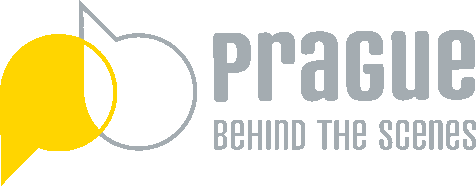How to read the Astronomical Clock? How does it work and how to understand what it really shows you? This mechanism constructed in 1410 is fascinating, but you know what? Almost nobody knows how to read it! Without learning how it works, it’s just a mix of hands, circles, colors, numerals, various objects, zodiac signs and sculptures. So, where to start? This blog post will teach you how to easily read and finally understand the Prague Astronomical Clock. In 4 simple steps. Ready?
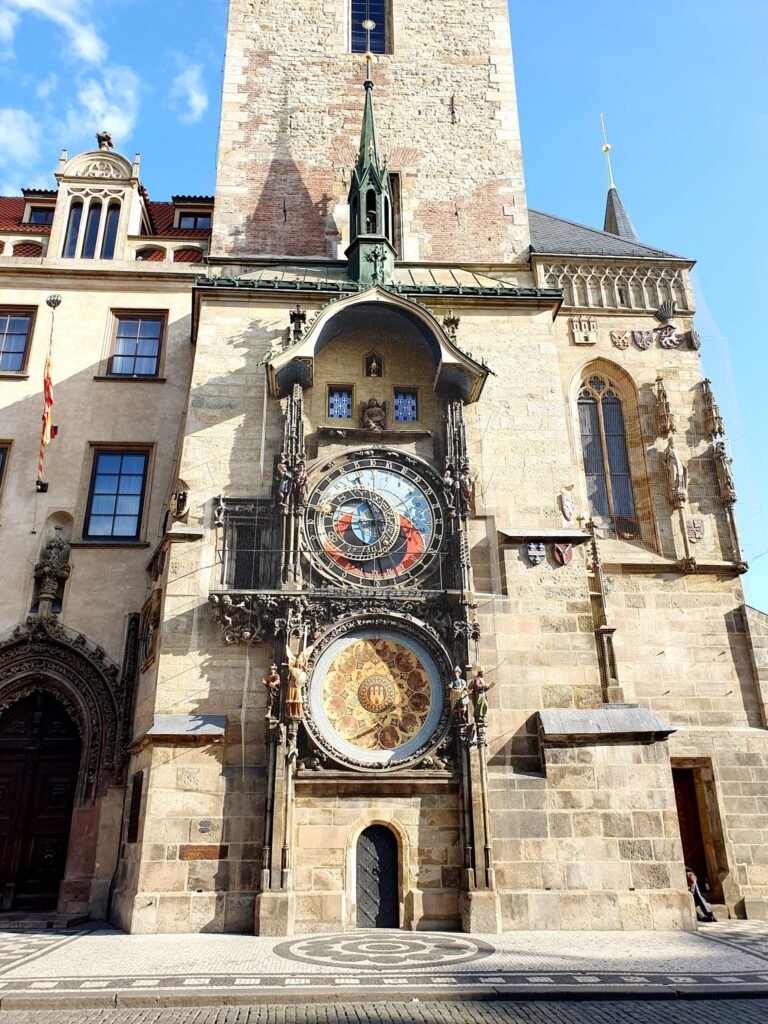
Who is writing you this blog post?
My name is Dana and I am a Prague local. And also a solopreneur in the travel industry. I am running my own tiny business called Prague Behind The Scenes – Small Group Tours and Experiences, and showing my clients around Prague in a less touristy way. To help them enjoy Prague in a more authentic way. I am also an active blogger.
Yes, this content was written by me, not by artificial intelligence. Real brain and real hands.
Dana, owner and guide for Prague Behind The Scenes
I am regularly sharing practical or unusual information about Prague and in this blog post I would like to teach you how to read the Astronomical Clock in Prague. In a more understandable way. The way I learnt it myself a couple years back. No worries if you don´t understand the mechanism right away. It also took me many hours to fully learn how it works.
Question, comment, tour requests? 🙂 Please feel free to get in touch, I am not an anonymous company, you will always communicate directly with me: dana@praguebehindthescenes.com

Few practical things before you go to visit the Astronomical Clock in Prague
- Prague Astronomical Clock is located on the Old Town Square, the most beautiful square in Prague. Besides the Astronomical Clock you can also find here Týn Church, St. Nicolas Church, Old City Hall and many well preserved buildings and palaces. The Old Town Square is adjacent with the Jewish Quarter (5 minutes walk).
- Go there early. I know, I know….you are on holiday and you want to have a good sleep, enjoy hotel breakfast, etc…BUT, believe me, it’s so much worth it to wake up early one day and be at the clock before the crowds come.
- Best time to visit is before 8am. To enjoy your space and explore the sophisticated functions of the clock without large groups of people around you (check the pictures below and find approx. 1000 differences:))
- The tower with the Astronomical Clock is actually open to the public! You can walk up to the top (fantastic views!!). On the first opening hour there is a 50 % discount on the entry. The clock itself from outside is free of charge and open 24/7!!!
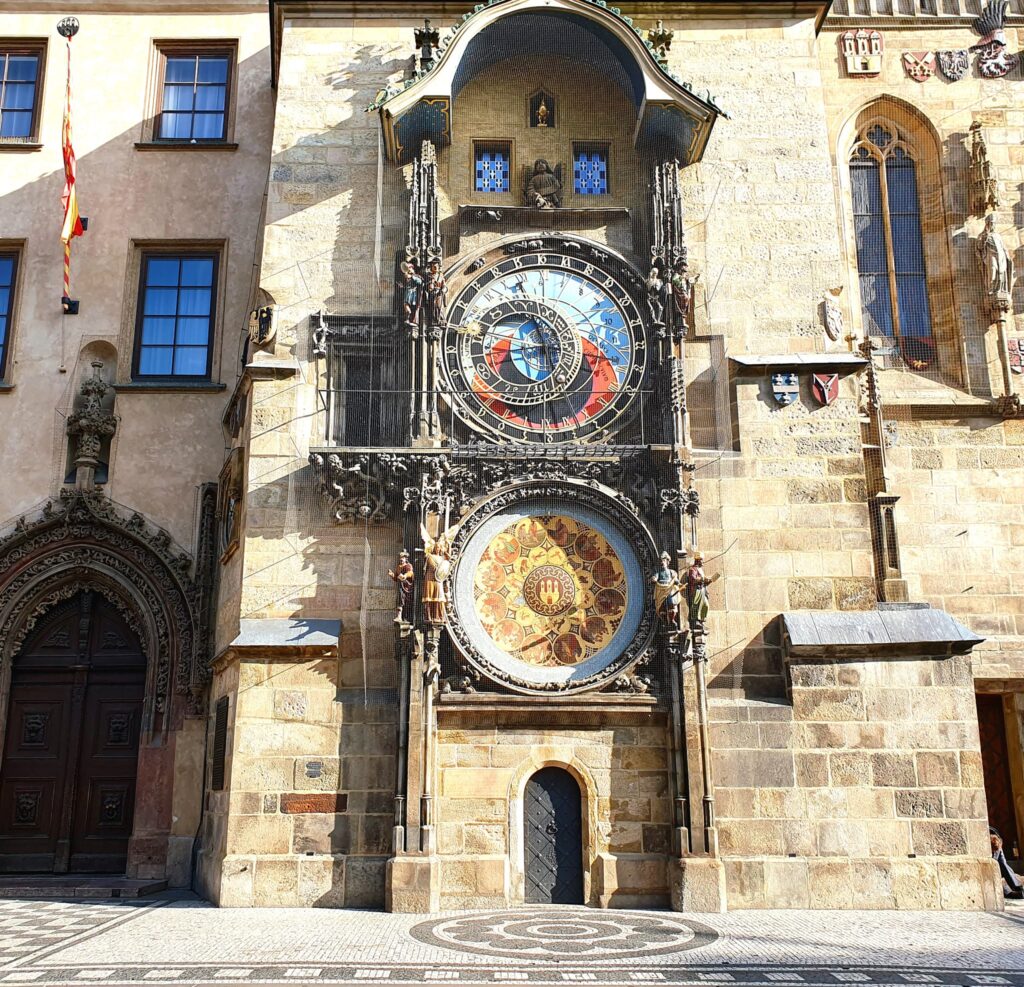
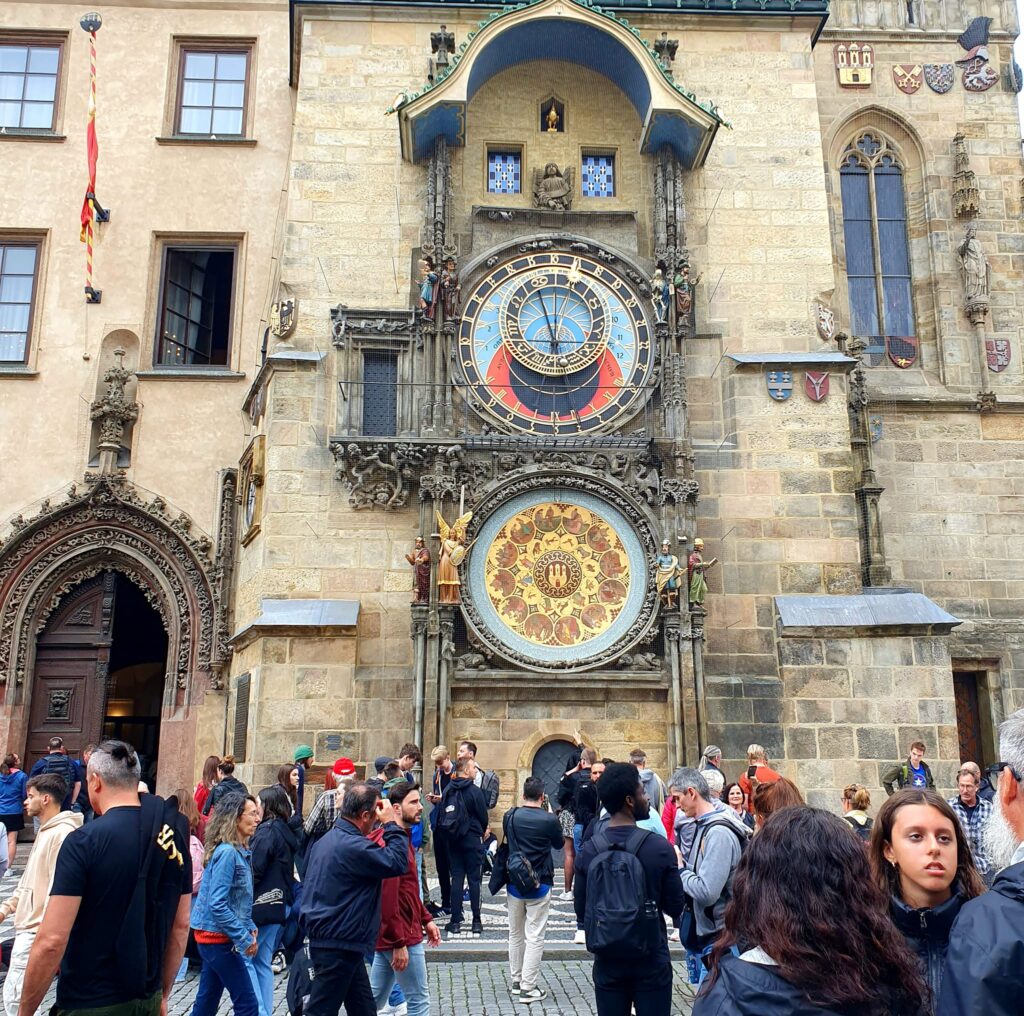
1. How to read the Astronomical Clock in 4 easy steps. First, learn where to look!
You are maybe laughing now. But you know what? Many tourists often think that the actual Astronomical Clock is the parade of the 12 Apostles who show up every whole hour in the windows at the top of the tower. And that´s a big mistake.
Hundreds of people gather under the Astronomical Clock tower every hour just to see the Apostles in the windows. Then they clap their hands and leave. Often disappointed as they don´t understand what is so special about it…1 minute show and that’s it?
Guys, this is a mistake. The show of Apostles is not the Astronomical Clock. The applause should go to the persons who constructed the two dials lower on the tower. This is the actual Astronomical Clock people should come to admire. It consists of two parts: the astrolabe (upper colorful circle) and a calendar board (the lower circle).
Once you learn how to read the Astronomical Clock, you will never come back during the whole hour to see the Apostles. You will want to come back between the shows. And best before 8am. Before the crowds come!
2. What are all the elements and numbers on the clock?
First off, we need to familiarise ourselves with all the important elements on the clock, then I will explain to you what they actually show you.
NUMBERS
There are three sets of numbers on the dial: Gothic numerals, Roman numerals and Arabic numerals. Each set will show you a different type of time. The Gothic numerals show you Old Czech time, Golden Roman numerals show you the current time we use nowadays and the Arabic numerals show you Babylonian time. And as a bonus, the clock also shows Siderial time – but this is more related to astronomy than time.
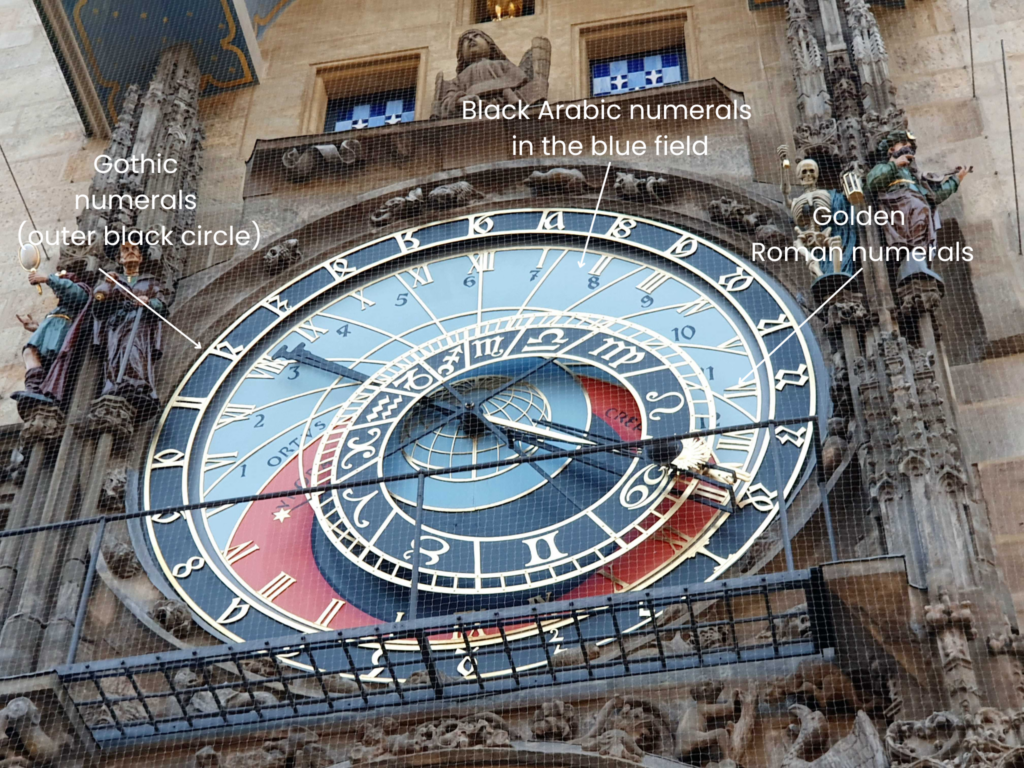
COLORS
Now look at the colors of the dial. There are three different fields, right?
Blue = daylight when the sun is above horizon, orange field represents the actual local horizon and also two parts of the day: dusk and dawn when the sun is below horizon. The black field is the astronomical night.
In the lower blue field and orange field you can also see four latin words: on the left side it´s AURORA (dawn), ORTUS (sunrise), on the right side OCCASUS (sunset), CREPUSCULUM (twilight, dusk).
The center of the whole clock (where all the hands cross) is the Earth and position of Prague on the Northern Hemisphere.
GOLDEN HAND WITH TWO POINTING FINGERS
One of the black poles carries a symbol of a golden hand (on the same pole is also a symbol of a sun). This hand is very important for us. Because it shows you the Old Czech Time and also the current time! Wait for the explanation.
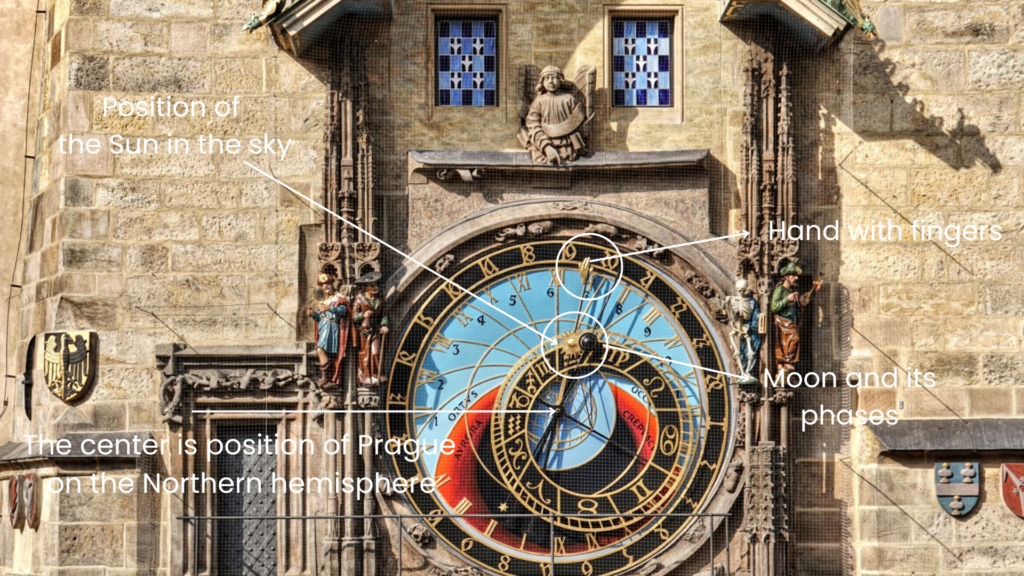
SYMBOL OF THE GOLDEN THE SUN
Is on the same pole as the golden hand. The symbol of the sun is moving up and down during the day – according to the real position of the sun in the sky above you: when it’s in the blue field, it’s a daytime, when the sun is in the red field it´s either dawn or dusk, when in the black field it means it´s night. It also shows you what zodiac sign we are in and also a date. I will write about it, too.
SYMBOL OF THE MOON
That´s the black and sometimes silver ball on the dial – please see the picture above. This metal ball is rotating according to the current moon phase! That’s why half of the ball is silver and half is black – to present what moon phase we are in. That’s basically what we see in the sky at night, sometimes full moon, sometimes only a tiny crescent…
CIRCLE WITH ZODIAC SIGNS
Inside the astrolabe (the colorful dial) you can also see another circle – golden one with black background – depicting all 12 zodiac signs. But wait – around each sign you can also see such tiny golden beams, fields. They represent days! Each field symbolises approx. 5 days. As you can see, some fields are wider, some are smaller. It doesn’t mean that some months are longer and some shorter. The sizes show you how much daylight you have in each month and how high the sun goes above the horizon. The winter zodiac signs have smaller fields, while the summer ones have bigger ones.
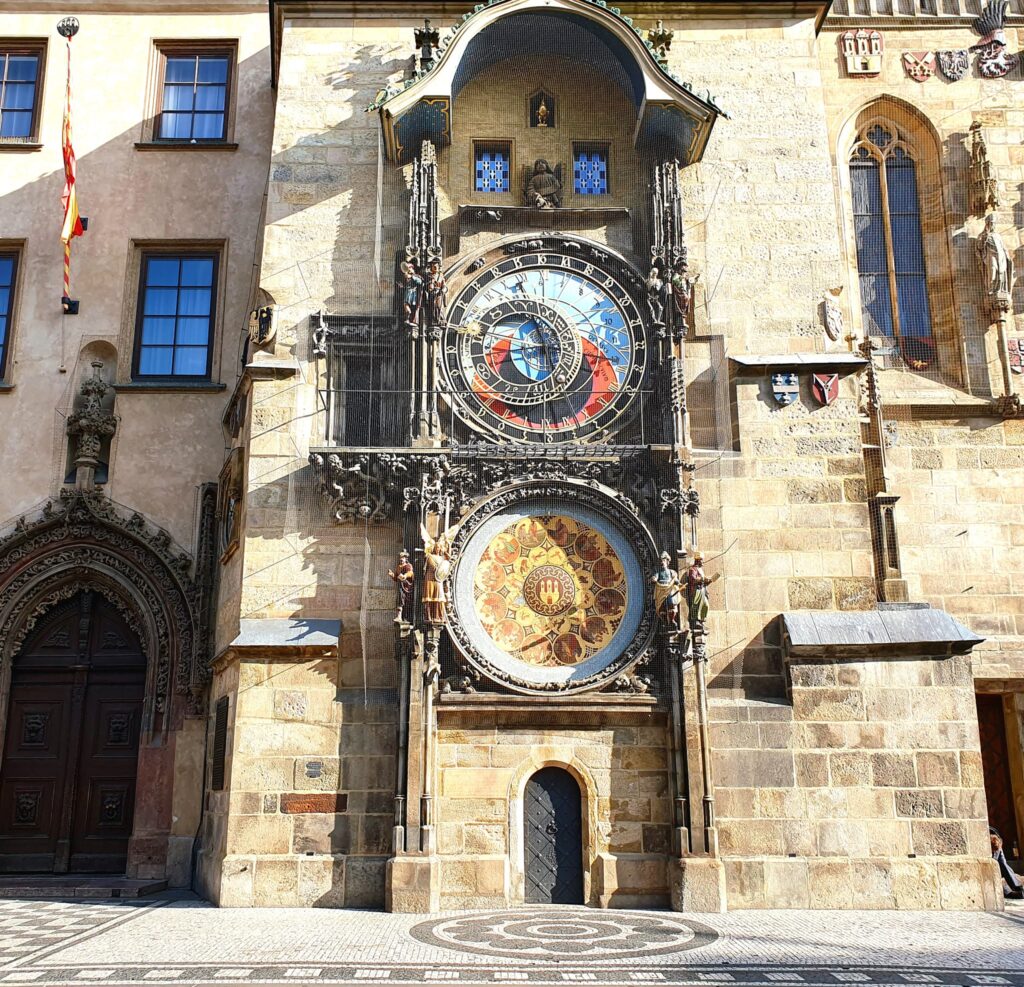
3. How to read the time and everything else on the Astronomical Clock?
HOW TO READ THE CURRENT TIME
First I will teach you how to read the current time: find the golden hand with two pointing fingers. Got it? Then look at the Roman numerals. Voilá, the Roman numerals and the golden hand will show you the current time. The mechanism is super smart but unfortunately it´s not set for the daylight saving time. When you are visiting Prague in summer, make sure you add +1 hour when looking at the Astronomical Clock.
OLD CZECH TIME
This time is very special. It’s the type of time used in the Czech lands when the Astronomical Clock was constructed (around 1410). The old Czech time shows you how much daylight is left until the sunset. Why was this so important? People needed to know how long they can work outside or how far they can safety travel because the roads and streets were not lit up and not always very safe.
So, how to read the old Czech time: again, search for the golden hand with pointing fingers. The hand is pointing to the Gothic numerals (the outer black circle). Then count toward the right until you reach Gothic number 24. Then you will learn how many hours are left until sunset. The old Czech time had 24 hours but didn´t start with the midnight, it always started with the sunset. Once the pointing fingers reach the Gothic number 24, it’s sunset time and that’s when the new day started back in the days.
BABYLONIAN TIME
This is one of the oldest times in the world and Prague Astronomical Clock is the only astronomical clock in the world that can still measure it. It´s calculated from the sunrise until the sunset (1 – 12 hours). How to read it? Search for the symbol of the sun and then look at the black Arabic number above it. This time, for us, doesn´t make much sense. But it´s sometimes used in the Jewish liturgy. And it´s absolutely fine if you don’t understand its meaning. Me neither. Honestly, my head explodes at this moment. If you are interested in more details and you are a technical geek (I am not!!!!), please visit a website Orloj.eu
WHAT DOES THE SYMBOL OF THE SUN DO?
The symbol of the sun is on the same pole as the pointing fingers. The sun is going up and down as the sun in the sky. It also sits in the current zodiac sign. Just look at the zodiac sign circle. The zodiac circle is rotating and copying the way of the sun pole. Then you will always know what zodiac sign we are in.
4. Calendar board – what does the bottom circle show you?
This part will be much simpler. I promise. The calendar board is the circle under the astrolabe (the upper circle) and was added to the mechanism at the end of the 15th century.
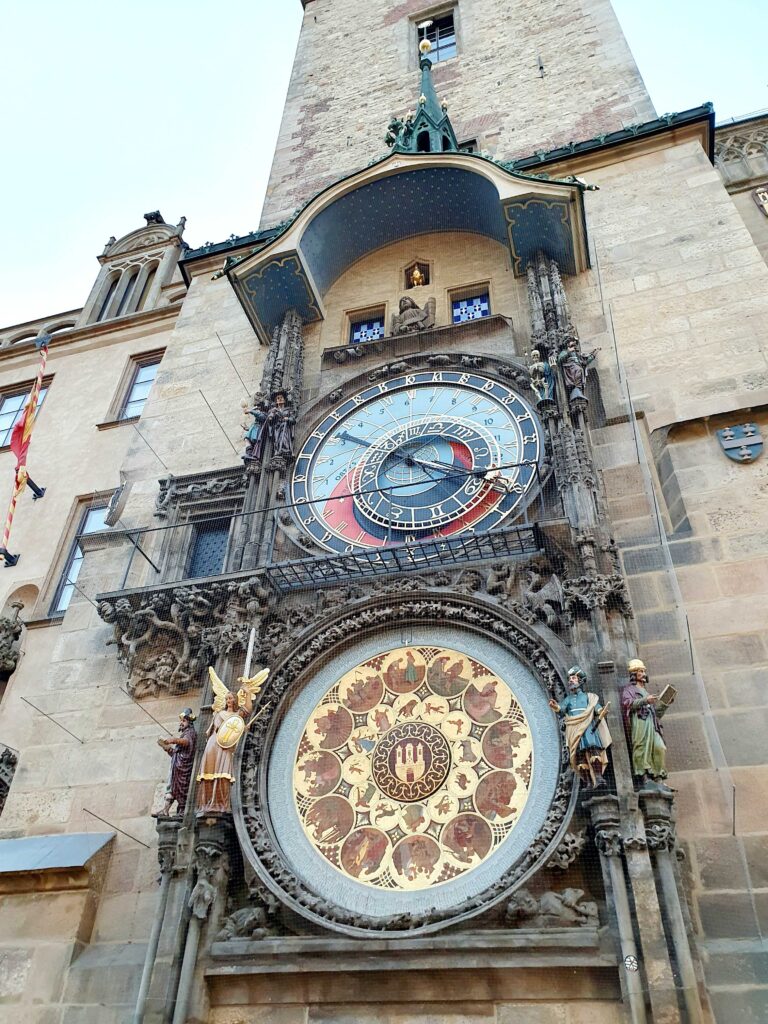
Can you see the outer grey circle? It’s full of names. It’s not very well visible from this picture but there are 365 fields and on every single day falls a name day. Yes, we celebrate name days here! Nowadays we celebrate the civil names like Dana, Katerina, Ivana…but back in the days people celebrated saints and patron saints. That’s why in each field you can find the name of the saint. Or the name of some religious holiday. Every day, after midnight it moves clockwise by one field. The current date and name of the saint you can see at the top. The tiny golden arrow is pointing there.
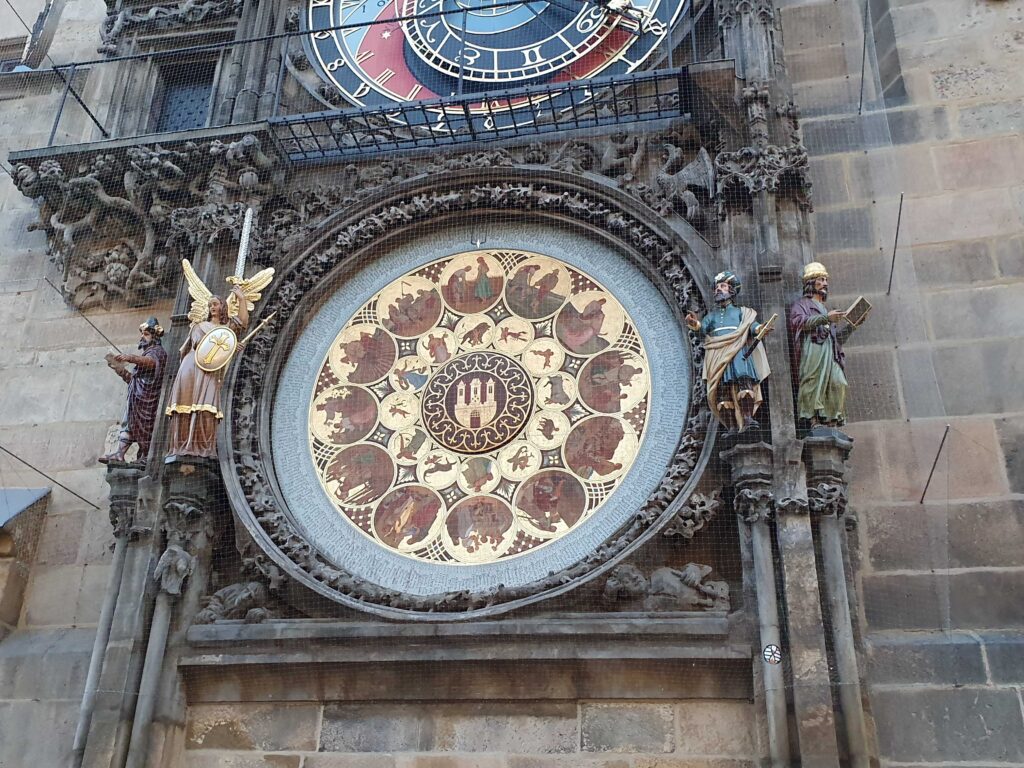
There are also bigger and smaller circles with pictures. What do they depict? In the very center you can see the original coat of arms of Prague (towers with a gate). Then the big outer circles represent each month of the year and depict activities people in the countryside usually did during the particular month. The small circles represent – again – zodiac signs. The whole calendar is rotating as well and the golden arrow at the top is pointing towards the current month and zodiac sign.
But this is not all….
This blog post was only a brief introduction:-) You can see much more details on the Prague Astronomical Clocks. But I believe this scope of information was enough for the beginning. Next time I will explain to you more.
Thank you very much for reading it.
Dana, owner and fully certified guide for Prague Behind The Scenes | small-group tours and experiences.
If you like my content, you can support my small writing by buying me a virtual coffee. Thank you for your kind help.

Please also feel free to contact me if you have any questions or want to see Prague with me: dana@praguebehindthescenes.com
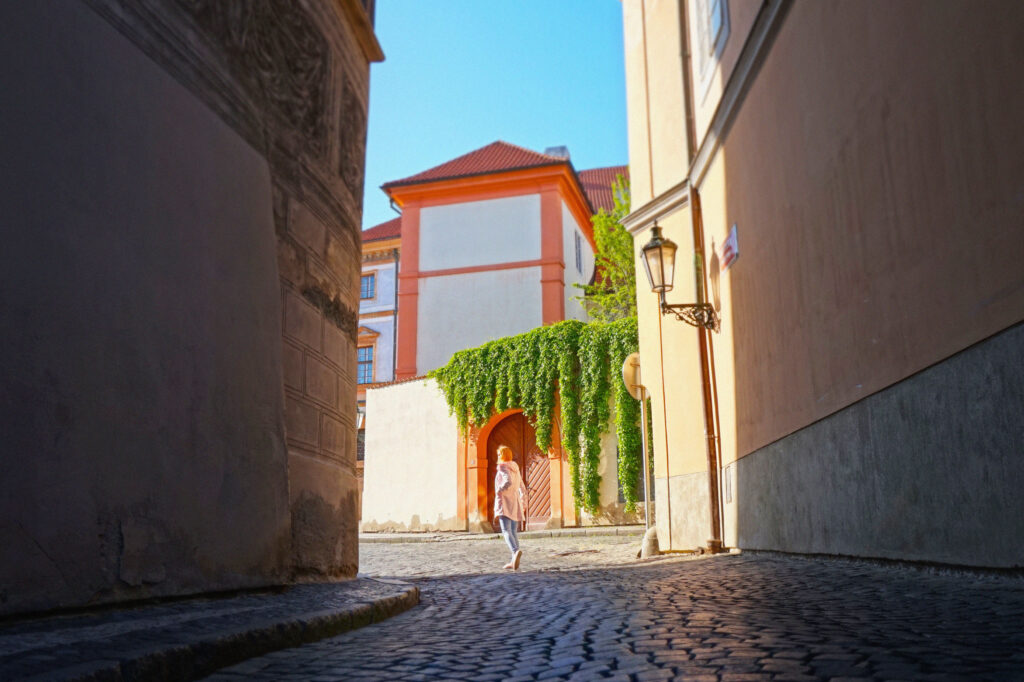
Where to next?
How to get from Prague airport to the city center?
Where to stay in Prague: 5 tips for hotel locations, sightseeing and friendly downtown neighborhoods.
3-hour private tour of Prague downtown with Dana
3 hidden gems of Prague food scene (still undiscovered by food bloggers and masses)
